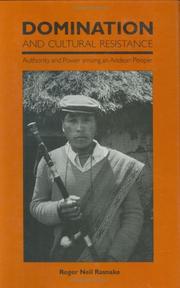
ISBN: 0822308096 9786612904073 1282904078 0822381516 Year: 1988 Publisher: Durham : Duke University Press,
Abstract | Keywords | Export | Availability | Bookmark
 Loading...
Loading...Choose an application
- Reference Manager
- EndNote
- RefWorks (Direct export to RefWorks)
Domination and Cultural Resistance examines the social life of the Yura, a Quechua-speaking Andean ethnic group of central Bolivia, and focuses especially on their indigenous authorities, the kuraqkuna or elders. Combining ethnohistorical research with contemporary fieldwork, Roger Neil Rasnake traces the evolution of leadership roles within the changing composition of the native Andean social groupings, the ayllus-from the consolidation of pre-Hispanic Aymara polities, through the pressures of the Spanish colonial regime and the increasing fragmentation of the repub
Indians of South America --- Quechua Indians --- Indiens Quechua --- Government relations --- Ethnic identity --- Social life and customs --- Relations avec l'Etat --- Moeurs et coutumes --- Yura (Bolivia) --- American aborigines --- American Indians --- Indigenous peoples --- Kechua Indians --- Kichwa Indians --- Napo Kichwa Indians --- Quichua Indians --- Social life and customs. --- Ethnic identity. --- Government relations. --- Ethnology
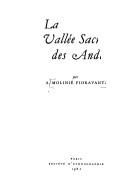
ISBN: 2901161200 2821845197 9782901161202 Year: 1982 Volume: 4 Publisher: Institut français d’études andines
Abstract | Keywords | Export | Availability | Bookmark
 Loading...
Loading...Choose an application
- Reference Manager
- EndNote
- RefWorks (Direct export to RefWorks)
Indians of South America --- Land reform --- Quechua Indians --- Indiens d'Amérique --- Réforme agraire --- Indiens Quechua --- Economic conditions --- Social conditions --- Conditions économiques --- Conditions sociales --- Yucay (Peru) --- Yucay (Pérou) --- -Indians of South America --- -Land reform --- -Quechua Indians --- -Kechua Indians --- Kichwa Indians --- Napo Kichwa Indians --- Quichua Indians --- Agrarian reform --- Economic policy --- Land use, Rural --- Social policy --- Agriculture and state --- American aborigines --- American Indians --- Indigenous peoples --- Ethnology --- Urubamba River Valley (Peru) --- -Yucay (Peru) --- -Urubamba Valley (Peru) --- -Economic conditions --- Indiens d'Amérique --- Réforme agraire --- Conditions économiques --- Yucay (Pérou) --- Kechua Indians --- Urubamba Valley (Peru) --- Economic conditions. --- Regions & Countries - Americas --- History & Archaeology --- Latin America --- Quechua Indians - Economic conditions --- Quechua Indians - Social conditions --- Indians of South America - Peru - Yucay - Social conditions --- Land reform - Peru - Yucay --- Land reform - Peru - Urubamba River Valley --- Yucay (Peru) - Economic conditions --- agriculture --- Andes --- Cuzco --- communauté rurale --- Pérou
Book
ISBN: 9780822359449 9780822359630 0822359448 0822359634 9780822375265 0822375265 Year: 2015 Volume: 2011 Publisher: Durham, N.C. Duke University Press
Abstract | Keywords | Export | Availability | Bookmark
 Loading...
Loading...Choose an application
- Reference Manager
- EndNote
- RefWorks (Direct export to RefWorks)
Conversing with Mariano and Nazario Turpo, father and son, Marisol de la Cadena explores the entanglements and partial connections between indigenous and non-indigenous worlds, and the ways in which indigenous knowing both include and exceed modern and non-modern practices.
Ethnology --- Shamans --- Quechua Indians --- Medicine --- Kechua Indians --- Kichwa Indians --- Napo Kichwa Indians --- Quichua Indians --- Indians of South America --- Medicine-man --- Medicine men --- Shaman --- Healers --- Mediums --- #SBIB:39A74 --- Etnografie: Amerika --- Ethnology. --- Shamans. --- Quechua. --- Kulturanthropologie. --- Indigenismus. --- Religionsausübung. --- Schamanismus. --- Agrarreform. --- Kulturkontakt. --- Politischer Wandel. --- Medicine. --- Peru. --- Ethnologie. --- Chamans --- Quechua (Indiens) --- Médecine. --- Pérou --- Ethnology - Peru --- Shamans - Peru --- Quechua Indians - Medicine - Peru --- Sociology of minorities --- Sociology of environment --- Peru --- Médecine. --- Pérou
Book
ISBN: 9972691837 2821844433 Year: 2008 Publisher: Institut français d’études andines
Abstract | Keywords | Export | Availability | Bookmark
 Loading...
Loading...Choose an application
- Reference Manager
- EndNote
- RefWorks (Direct export to RefWorks)
Este testimonio fue recogido por Martine du Authier cuando, siendo estudiante de Etnología, realizaba una investigación sobre la fiesta mestiza de la Virgen del Carmen de Paucartambo (Cuzco), habiendo sido David Villasante González (1900-1988) uno de sus principales informantes. Después del fallecimiento de este último, el libro se pudo terminar gracias al concurso de una de sus hijas, Rosaldina. Dotado de grandes calidades humanas, David Villasante fue un apasionado de las tradiciones culturales de su pueblo, sin establecer jerarquías entre los elementos indígenas y mestizos. Su arraigo a su entorno vital fue de la mano con una creatividad de dones múltiples: era a la vez dibujante, acuarelista, escultor, fotógrafo, bordador, poeta, dramaturgo, músico, compositor, danzante, coreógrafo, diseñador de máscaras y de trajes, además de autodidacta inspirado: La fiesta de Paucartambo, su pueblo natal, está marcada por su fecunda vida.
Quechua Indians --- Regions & Countries - Americas --- History & Archaeology --- Latin America --- Social life and customs --- Kechua Indians --- Kichwa Indians --- Napo Kichwa Indians --- Quichua Indians --- Indians of South America --- Villasante González, David. --- Cuzco (Peru : Department) --- Social life and customs. --- González, David Villasante --- Villasante, David --- Cuzco (Peru : Region) --- Región de Cusco (Peru) --- Cusco (Peru : Department) --- Cuzco (Peru : Dept.) --- Qosqo (Peru : Department) --- fête --- témoignage --- Pérou --- recherche scientifique --- Quechua --- histoire orale --- Cuzco --- anthropologie --- culture populaire --- ethnologie --- XXe siècle --- identité culturelle
Book
ISBN: 9780773544338 9780773544345 9780773596610 9780773596627 077354433X 0773544348 0773596615 0773596623 Year: 2014 Publisher: Montreal, Que. McGill-Queen's University Press
Abstract | Keywords | Export | Availability | Bookmark
 Loading...
Loading...Choose an application
- Reference Manager
- EndNote
- RefWorks (Direct export to RefWorks)
A frank account about Andean aid that asks development workers to leave their hubris and Western recipes at home.
Sociology of minorities --- Development aid. Development cooperation --- Developing countries: agricultural and food problems --- Bolivia --- Agricultural assistance --- Agriculture --- Quechua Indians --- Peasants --- Peasantry --- Agricultural laborers --- Rural population --- Marks (Medieval land tenure) --- Villeinage --- Kechua Indians --- Kichwa Indians --- Napo Kichwa Indians --- Quichua Indians --- Indians of South America --- Farming --- Husbandry --- Industrial arts --- Life sciences --- Food supply --- Land use, Rural --- Foreign aid to agriculture --- Technical assistance --- International cooperation --- E-books --- Assistance agricole --- Quechua (Indiens) --- Paysannerie
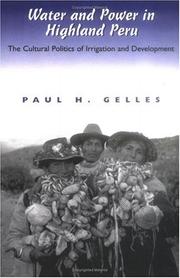
ISBN: 0813560187 0585332673 9780585332673 0813528070 0813528062 9780813528069 0813528062 9780813528076 0813528070 9780813560182 Year: 2000 Publisher: New Brunswick, N.J. Rutgers University Press
Abstract | Keywords | Export | Availability | Bookmark
 Loading...
Loading...Choose an application
- Reference Manager
- EndNote
- RefWorks (Direct export to RefWorks)
Quechua Indians --- Irrigation --- Latin America --- Regions & Countries - Americas --- History & Archaeology --- Kechua Indians --- Kichwa Indians --- Napo Kichwa Indians --- Quichua Indians --- Indians of South America --- Water in agriculture --- Chemigation --- Agriculture --- Social aspects --- Ethnic identity. --- Cabanaconde (Peru) --- Cabaconde (Peru) --- Politics and government. --- Ethnic relations. --- #SBIB:39A4 --- #SBIB:39A74 --- Ethnic identity --- Toegepaste antropologie --- Etnografie: Amerika --- Quechua (Indiens) --- Aspect social --- Identité ethnique --- Cabanaconde (Pérou) --- Ethnic relations --- Politics and government --- Relations interethniques --- Politique et gouvernement
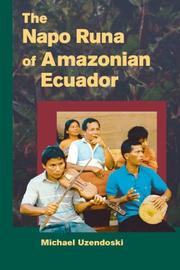
ISBN: 1283609142 9786613921598 0252092694 9780252092695 0252030079 0252072553 9781283609142 9780252072550 9780252030079 0252072553 6613921599 Year: 2005 Publisher: Urbana
Abstract | Keywords | Export | Availability | Bookmark
 Loading...
Loading...Choose an application
- Reference Manager
- EndNote
- RefWorks (Direct export to RefWorks)
Indians, Treatment of --- Quechua Indians --- Indians --- Kechua Indians --- Kichwa Indians --- Napo Kichwa Indians --- Quichua Indians --- Indians of South America --- Government relations. --- Social life and customs. --- Government relations --- Napo River Valley (Ecuador and Peru) --- Napo Valley (Ecuador and Peru) --- Ethnic relations. --- Quechua (Indiens) --- Attitudes envers les Indiens d'Amérique --- Social life and customs --- Moeurs et coutumes --- Relations avec l'Etat --- Napo, Vallée de la (Equateur et Pérou) --- Ethnic relations --- Relations interethniques --- Ethnology. Cultural anthropology --- Ecuador
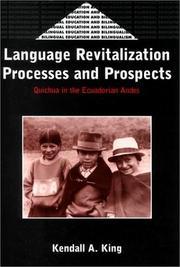
ISBN: 1280827831 9786610827831 9781853597073 1853597074 9781853597077 1853594954 9781853594953 1853594954 1853594946 9781853594953 9781853594946 Year: 2001 Publisher: Bristol Blue Ridge Summit
Abstract | Keywords | Export | Availability | Bookmark
 Loading...
Loading...Choose an application
- Reference Manager
- EndNote
- RefWorks (Direct export to RefWorks)
This work explores educational and community efforts to revitalize the Quichua language in two indigenous Andean communities of southern Ecuador. Analyzing the linguistic, social, and cultural processes of positive language shift, this book contributes to our understanding of formal and informal educational efforts to revitalize threatened languages.
Quechua language --- Quechua Indians --- Communication and culture --- Education, Bilingual --- Code switching (Linguistics) --- Language shift --- Switching (Linguistics) --- Bilingualism --- Linguistics --- Diglossia (Linguistics) --- Bilingual education --- Multilingual education --- Culture and communication --- Culture --- Kechua Indians --- Kichwa Indians --- Napo Kichwa Indians --- Quichua Indians --- Indians of South America --- Inca language --- Kechua language --- Quichua language --- Runasimi language --- Cacán language --- Study and teaching --- Grammar. --- Ethnic identity. --- Languages --- Saraguro Region (Ecuador) --- Social life and customs. --- Script switching (Linguistics) --- Language Revitalization. --- Quichua. --- indigenous language.
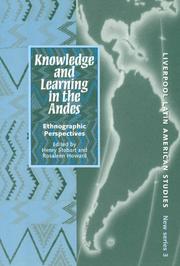
ISBN: 1781386846 1846313422 1417568119 9781417568116 9781846313424 9781781386842 9780853235187 085323518X Year: 2002 Volume: 3 Publisher: Liverpool Liverpool University Press
Abstract | Keywords | Export | Availability | Bookmark
 Loading...
Loading...Choose an application
- Reference Manager
- EndNote
- RefWorks (Direct export to RefWorks)
The aim of this book is to explore the current research into the ways in which Andean peoples create, transmit, maintain and transform their knowledge in culturally significant ways, and how processes of teaching and learning relate to these. The contributions, from eminent researchers in anthropology, sociology, cultural studies and linguistics, include cross-disciplinary approaches, and cover a diverse geographic area from Ecuador to Peru, Bolivia and Northern Chile. The case studies reflect on the variously harmonious and conflictive relationships between knowledge, power, communicative media and cultural identities in Andean societies, from within local, national and global perspectives.
Indians of South America --- Education --- Children --- Education, Primitive --- Education of children --- Human resource development --- Instruction --- Pedagogy --- Schooling --- Students --- Youth --- Civilization --- Learning and scholarship --- Mental discipline --- Schools --- Teaching --- Training --- American aborigines --- American Indians --- Indigenous peoples --- Ethnology --- Andes Region --- Acuerdo de Cartagena countries --- Andean countries --- Andean region --- Intellectual life. --- Quechua Indians --- Educational anthropology --- Quechua (Indiens) --- Indiens d'Amérique --- Anthropologie et éducation --- Ethnoscience --- Ethnosciences --- Andes --- Vie intellectuelle --- Education. --- Ethnoscience. --- Campus cultures --- Culture and education --- Education and anthropology --- Anthropology --- Culture --- Kechua Indians --- Kichwa Indians --- Napo Kichwa Indians --- Quichua Indians --- Philosophy
Book
ISBN: 150360263X 9781503602632 9781503600881 9781503602625 1503602621 1503600882 Year: 2017 Publisher: Stanford, California
Abstract | Keywords | Export | Availability | Bookmark
 Loading...
Loading...Choose an application
- Reference Manager
- EndNote
- RefWorks (Direct export to RefWorks)
Mourning Remains examines the attempts to find, recover, and identify the bodies of Peruvians who were disappeared during the 1980s and 1990s counterinsurgency campaign in Peru's central southern Andes. Isaias Rojas-Perez explores the lives and political engagement of elderly Quechua mothers as they attempt to mourn and seek recognition for their kin. Of the estimated 16,000 Peruvians disappeared during the conflict, only the bodies of 3,202 victims have been located, and only 1,833 identified. The rest remain unknown or unfound, scattered across the country and often shattered beyond recognition. Rojas-Perez examines how, in the face of the state's failure to account for their missing dead, the mothers rearrange senses of community, belonging, authority, and the human to bring the disappeared back into being through everyday practices of mourning and memorialization. Mourning Remains reveals how collective mourning becomes a political escape from the state's project of governing past death and how the dead can help secure the future of the body politic.
Disappeared persons --- Disappeared persons' families --- Quechua Indians --- State-sponsored terrorism --- Exhumation --- Transitional justice --- Justice --- Human rights --- Disinterment --- Autopsy --- Burial --- Government violence --- Governmental violence --- State-sponsored violence --- State terrorism --- Violence, Governmental --- Violence, State-sponsored --- Political atrocities --- Terrorism --- Kechua Indians --- Kichwa Indians --- Napo Kichwa Indians --- Quichua Indians --- Indians of South America --- Families --- Crimes against --- Political aspects --- Family relationships --- Missing persons --- Victims of state-sponsored terrorism --- Disappeared persons - Peru. --- Disappeared persons' families - Peru. --- Quechua Indians - Crimes against - Peru. --- State-sponsored terrorism - Peru. --- Exhumation - Political aspects - Peru. --- Transitional justice - Peru.

 Search
Search Feedback
Feedback About UniCat
About UniCat  Help
Help News
News